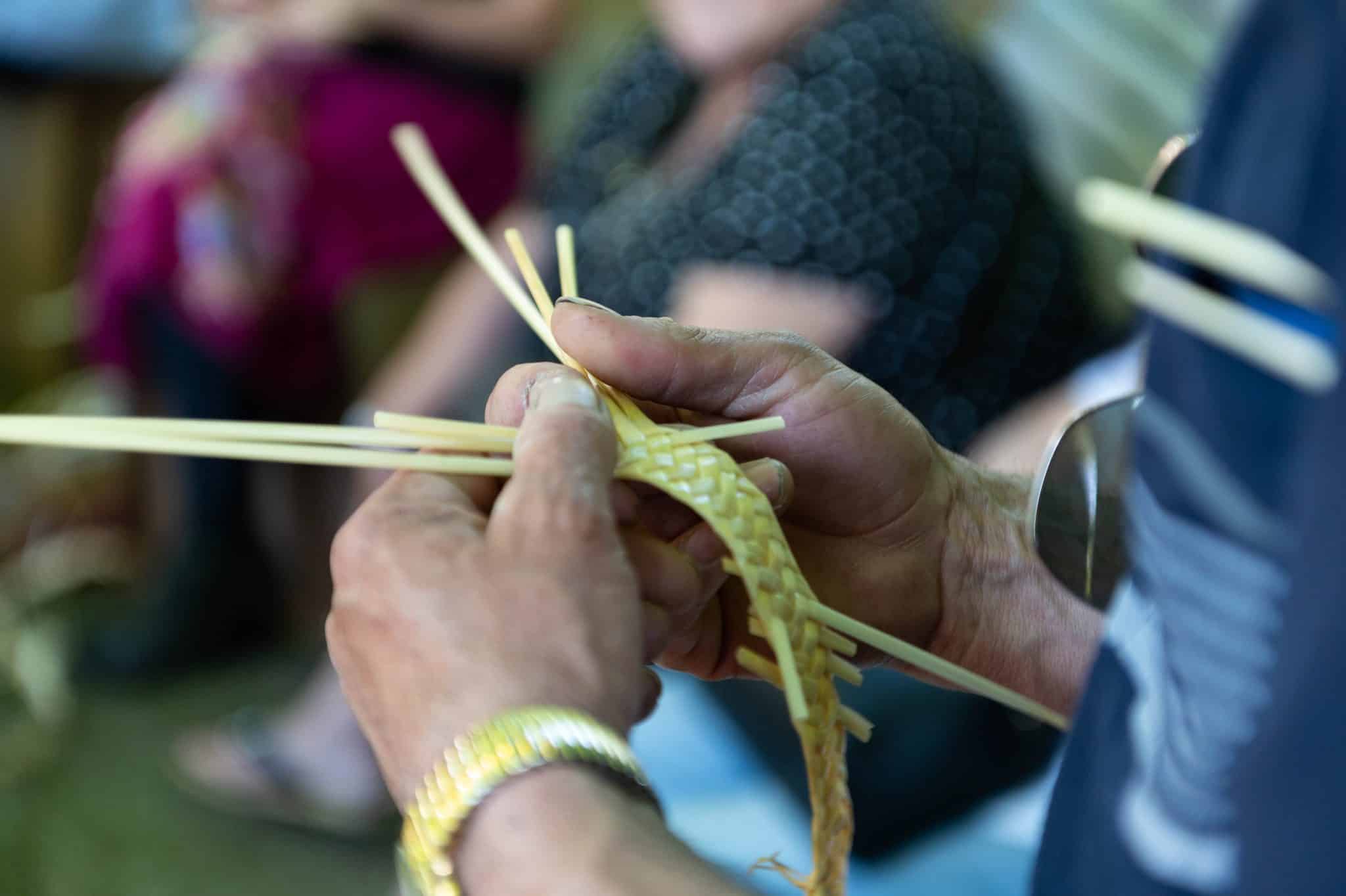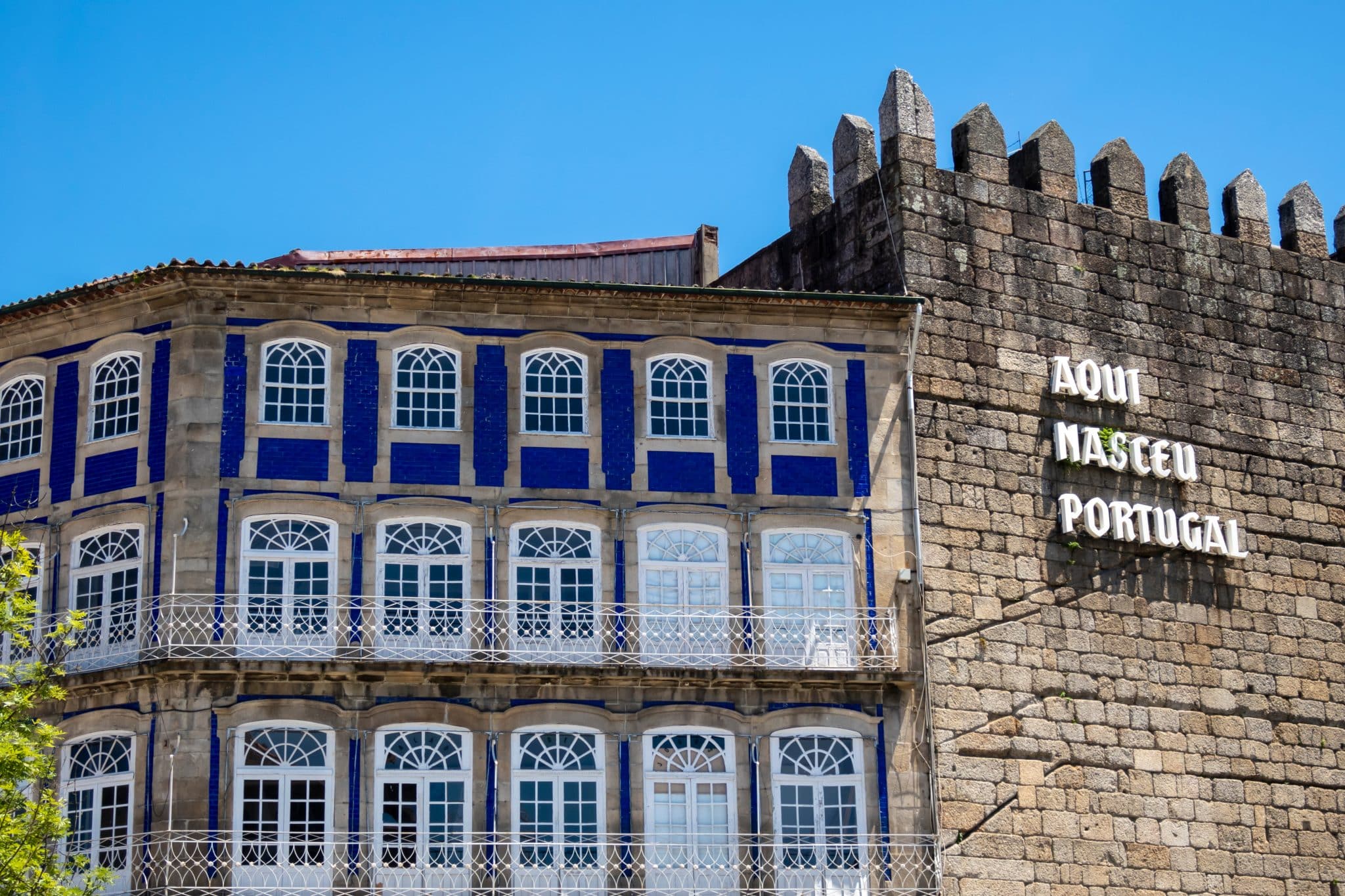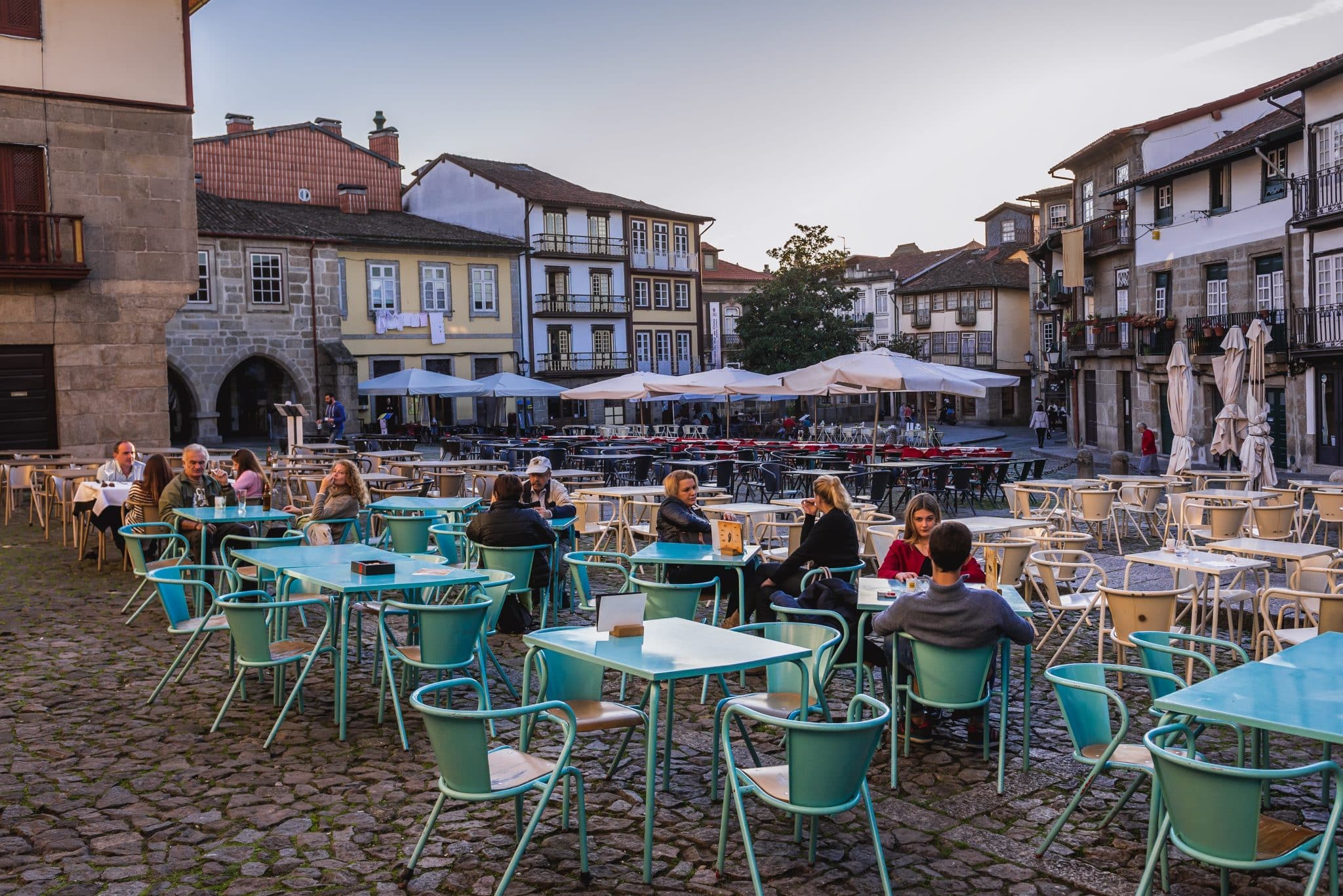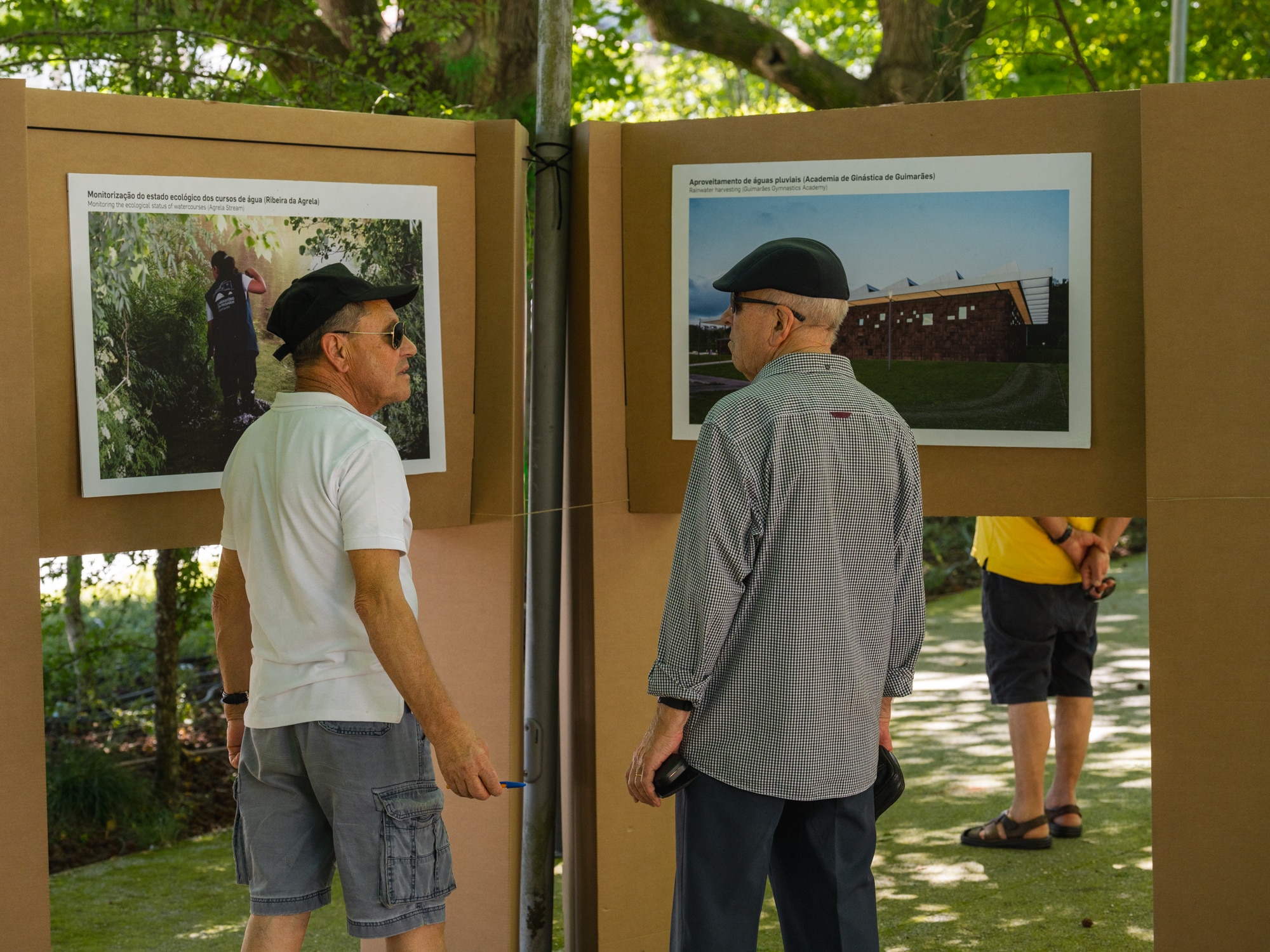Guimarães: from cradle of a nation to cradle of innovation

“You cannot say Guimarães without a smile. To do this work you need to smile, and you need to have passion. That’s the secret ingredient,” says Dalila Sepúlveda, the city’s Director of the Environment and Sustainability Department. This sentiment encapsulates the spirit driving Guimarães’ innovative approach to climate action. The northern Portuguese city is not only the cradle of the nation and birthplace of its first king, but has also tapped into its innovative spirit, becoming a beacon of community-driven sustainable development and citizen-driven climate action.
This article was originally published on the NetZeroCities website, here.
Guimarães is part of the Pilot City Programme, facilitated by Climate KIC. Their project, District C – A zero-carbon commitment, is the culmination of the experience and relationships with local stakeholders that the city has built up over the past 10 years. Its aim is to significantly ramp up decarbonisation in the city’s central district, serving as a test bed for emission reduction strategies.
Learning from the past
In the late 1990s, Guimarães implemented its first ‘Park and Ride’ scheme, offering free parking to commuters who used public transport. The initiative failed, with only a handful of people using the service daily.
“It wasn’t successful because they didn’t include citizens. At that time, we didn’t know how important that was. But now we know that citizens are the project. If we don’t include them early on and in the ideation, the result will not be successful,” explains Sepúlveda.
This experience put the city on a learning track that has heavily shaped its current climate work.
The people’s city
Today, it is very much the people’s city: “Guimarães is a city that works for and with its citizens. They know they have a voice and a say in what goes on, and that is very important to us,” says Sepúlveda. “I am proud of this, and proud that our citizens hold us to account.”
The city administration encourages citizen involvement through various initiatives aimed at enhancing transparency, sustainability, and community participation. Urban community gardens, green belts, and programmes involving students and schools foster community integration and environmental awareness from a young age.
Public events and celebrations are held frequently, not only to keep people informed, but to include them in the festivities: “In Guimarães, we like to celebrate with our citizens,” says Sepúlveda.
Building an ecosystem for transformation
While citizens are key, their involvement is complemented by other initiatives creating an ecosystem where transformation can flourish. Since 2014, the city has had a formalised approach to sustainability enshrined in their governance ecosystem, Guimarães 2030, that sets out the city’s green and digital transition plans. Capabilities are reinforced through their participation in national and European-level programmes, such as adapt-local, the EU Mission for Climate-Neutral and Smart Cities, and Civitas.
All this is possible only with a strong political mandate and support.
“We have a strong governance ecosystem and strong leadership from our mayor, who trusts our team. The team also has a face – people know us, we are locals too. And this really helps us build a relationship of trust with the people who live and work here. These conditions are essential,” says Sepúlveda.
And to bring important industrial stakeholders on board, the city created a climate pact that over 100 companies have now signed.
District C: a zero-carbon commitment
“C stands for Culture, Creativity, Community, Knowledge (conhecimento in Portuguese), Science (ciência). The district we chose for our project is a central area in the city, and it embodies all these Cs. It’s a UNESCO World Heritage Site, it’s home to universities, historical buildings, markets, public spaces, housing, publicly and privately owned buildings […] It’s the most diverse and representative area of the city, so we can learn a lot by testing solutions in this area,” says Sepúlveda.
District C functions as a municipal test bed for innovative solutions, taking an integrated approach to reducing emissions from multiple sectors like energy, mobility, waste and land-use. Through the programme, the city administration experiments with different strategies like behaviour change, social innovation, culture, policy and regulation, green technology, sustainable finance, and new business models. This initiative builds on their experience in implementing ‘living lab’ projects with the aim of shaping future climate work and policy in the city.
Sepúlveda explains: “We need to test, test everything. To really understand how to decarbonise an area, you need to decarbonise many things at the same time, delivering the technical needs while engaging with all the social and economic activity in the area.” To this end, the city has developed a methodology for each initiative which follows the order of test, learn, refine, test again.
Early innovation in District C

The energy-producing marketplace and carpark acts as a focal point for other circular economy initiatives, such as the electrification of public transport, and an initiative to make the market plastic-free. A supply chain run by small, electric vehicles is being set up to deliver local produce to the market and improve waste management generated on market days.
Beyond the marketplace, other circular economy initiatives are also taking shape under the Pilot activity. By turning old street kiosks into recovery and repair centres, the city is giving new life to the kiosks and maintaining jobs in professions that have largely disappeared, such as shoemaking, tailoring, and remanufacturing, and bringing them back into the centre of the city.
To ensure citizens are involved in decision-making, the city has set up an online platform that brings together relevant information, events, and updates about ongoing projects. The first citizens’ assembly invited co-creation and open discussions around the district projects.
“By implementing small scale, reproducible strategies, we can act across the entire territory while being mindful of local, social and territorial differences. This approach enables us to unify the entire city – and beyond – as a cohesive unit and ensures everyone is included. We should imagine and build together,” says Sepúlveda.
Beautiful, sustainable, and inclusive cities
The project reflects the city’s vision of creating a healthy and happy environment through citizen participation. It also integrates the values of the New European Bauhaus, an EU policy and funding initiative that connects the European Green Deal to our daily lives and living spaces by fostering sustainable solutions for transforming the built environment and lifestyles.
Guimarães promotes this through their local climate projects. Their vision is one of sustainable, inclusive, and aesthetically pleasing spaces, products, and lifestyles. Through District C, the city promotes the integration of science, culture, and community in urban development, aiming for a comprehensive and replicable model of sustainability and innovation.
The secret to collaborative transformation?
“We have reached the one-year mark of the project. Now it’s time to analyse and show residents what we have done. They expect this from us. With climate action you don’t see the change in the first year. It requires more time to build up slowly,” explains Sepúlveda. “Because of this, we ask our residents to trust us, but in return we commit to listening to them and showing them what we are doing, how it’s going. They are on the journey with us.”
Guimarães has put in the work to build trusting relationships with citizens and stakeholders, as well as secure strong political buy-in. With their support, the city is now poised to take significant strides towards creating sustainable, inclusive, and beautiful urban spaces.
“I’m surprised about how quickly I’ve seen people’s attitudes, involvement, and levels of climate literacy develop,” says Sepúlveda. Investing in citizen relationships can go beyond mere engagement, enhancing democratic participation and holding city authorities to high standards.
As Guimarães continues its journey from the cradle of a nation to a cradle of innovation, its hard work of building a strong community is paying off. It stands as a demonstration that passion, community involvement, and a willingness to learn and adapt can drive meaningful local climate action.



